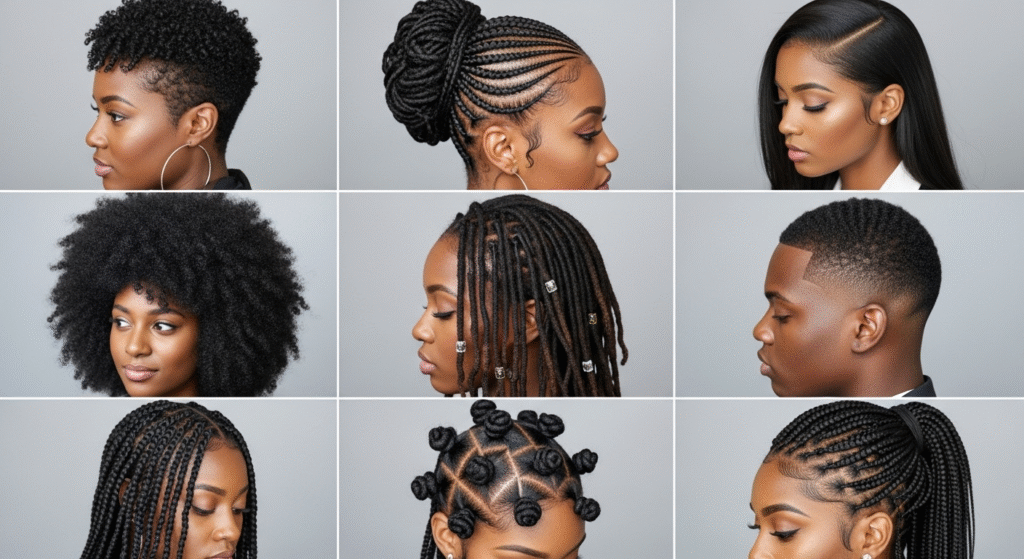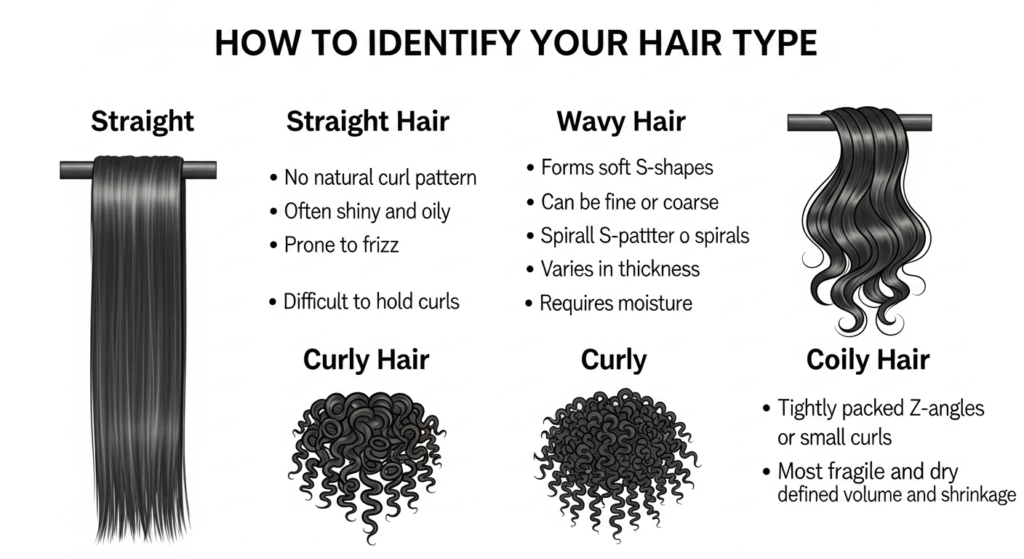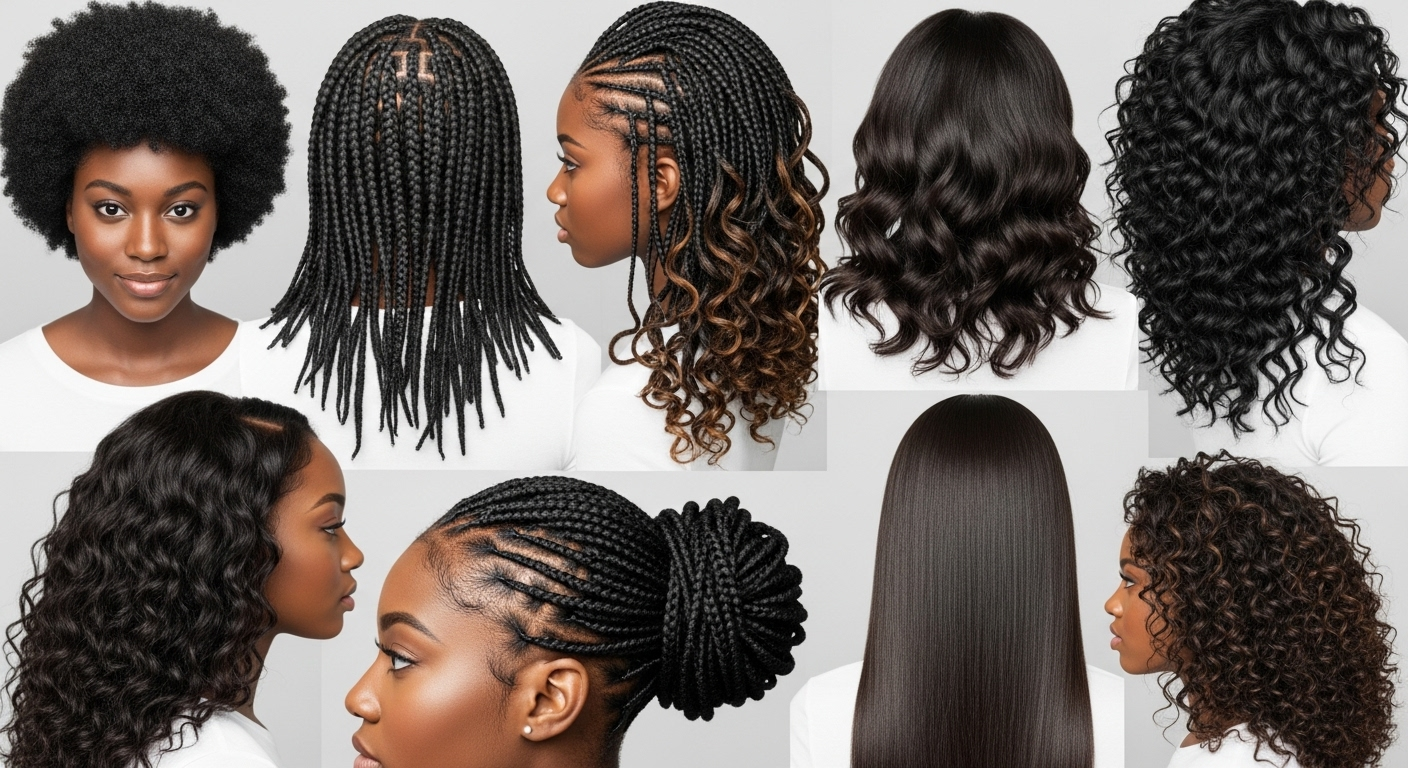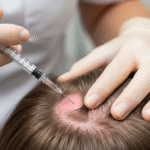Understanding your black hair type is essential to achieving healthy, beautiful hair. With so many different textures—curly, coily, and wavy—it can be difficult to know how to care for and style your hair correctly. This guide will explore various black hair types, helping you identify your texture and offering expert tips on managing and styling …
Understanding your black hair type is essential to achieving healthy, beautiful hair. With so many different textures—curly, coily, and wavy—it can be difficult to know how to care for and style your hair correctly.
This guide will explore various black hair types, helping you identify your texture and offering expert tips on managing and styling your hair. By the end, you’ll know how to keep your black hair healthy, moisturized, and styled to perfection.

What Are Black Hair Types?
The Basics of Hair Texture
Black hair types are generally classified into categories based on texture, ranging from straight to tightly coiled. The hair typing system used by professionals includes four main categories (Type 1 to Type 4), with Type 4 being the most common in black hair.
Hair can be categorized into different types based on curl pattern, from straight (Type 1) to tightly coiled or kinky (Type 4). Each hair type requires different care and styling methods to ensure the best health and appearance.
- Type 1: Straight hair, which doesn’t have any curls or waves.
- Type 2: Wavy hair with some texture and waves.
- Type 3: Curly hair with more defined curls and volume.
- Type 4: Coily or kinky hair, which is tightly curled and prone to shrinkage.
Key Characteristics of Black Hair
Black hair is typically known for its unique textures and characteristics, such as volume, density, and tight curls. Unlike other hair types, black hair can sometimes struggle with moisture retention, which can lead to dryness, frizz, and breakage if not properly cared for.
Additionally, black hair is more prone to shrinkage due to its natural curl pattern, making it important to understand how to handle and manage the hair to avoid damage.
Different Types of Black Hair
Type 4A Hair
- Definition: Soft, loosely coiled curls with an “S” pattern.
- Texture: Type 4A hair is more springy than wavy hair and has a defined curl pattern. It tends to be fine, soft, and very voluminous.
- Styling Tips: Moisture is key for Type 4A hair, so use rich leave-in conditioners or oils. Avoid heavy styling products, as they can weigh the curls down.
Type 4B Hair
- Definition: Z-shaped or angular curls.
- Texture: Type 4B hair has tight curls that form a Z-shape. It tends to be thicker and more densely packed than Type 4A.
- Common Challenges: This hair type can be prone to tangling, breakage, and dryness.
- Recommended Products: Hydrating creams, leave-in conditioners, and oils work wonders. Regular deep conditioning is important to keep this hair moisturized.
Type 4C Hair
- Definition: Very tight, dense curls with significant shrinkage.
- Texture: Type 4C hair is the kinkiest and most textured. The curls are extremely tight, almost zig-zag shaped, and the hair can shrink up to 75% of its length when dry.
- How to Care: Since Type 4C hair can become dry quickly, deep conditioning is essential. Use oils like castor oil or shea butter to lock in moisture.
Type 3C Hair
- Definition: Tight curls with more volume than Type 3B hair.
- Texture: Type 3C has well-defined, thick curls. The texture can range from coarse to fine, but it’s denser than Type 3B.
- Styling Tips: Keep your curls defined by using curl creams and gels. Heatless curling methods work best for this texture to avoid unnecessary damage.
How to Identify Your Hair Type

Step-by-Step Guide to Hair Typing
Identifying your hair type involves understanding both your curl pattern and the texture. Here’s how you can determine your hair type at home:
- Look at Your Natural Curl Pattern: Is your hair straight, wavy, curly, or coily? Type 1 is straight, Type 2 is wavy, Type 3 is curly, and Type 4 is coily.
- Test for Shrinkage: Wash your hair and observe how much it shrinks when dry. The more your hair shrinks, the more likely you have a coily texture (Type 4).
- Examine the Texture: Is your hair soft and loose or tight and coarse? This will help determine whether your hair falls into the Type 3 or Type 4 category.
Common Mistakes in Hair Typing
A common mistake people make is confusing hair porosity with hair texture. Porosity refers to how easily your hair absorbs and retains moisture, while texture refers to the curl pattern or straightness of the hair. Understanding both factors is important for proper hair care.
Hair Care Tips for Different Black Hair Types
Moisturizing and Hydrating Black Hair
Moisture is essential for keeping black hair healthy, as it tends to be more prone to dryness. For curly or coily hair, regular hydration prevents frizz and breakage.
- Best Moisturizing Products: Look for leave-in conditioners, hair oils, and hydrating creams that are specifically formulated for curly or coily hair. Ingredients like shea butter, coconut oil, and argan oil are highly effective in locking in moisture.
- Avoid: Products with alcohol, sulfates, or harsh chemicals that can strip natural oils from the hair.
Detangling Without Damage
Black hair, especially Type 4 textures, can tangle easily. Detangling with care is essential to avoid breakage.
- Best Practices: Use a wide-tooth comb or your fingers to detangle when the hair is wet and conditioned. Start from the tips and work your way up to minimize damage.
- Tip: Consider detangling in sections for better control.
Protective Hairstyles for Healthier Hair
Protective hairstyles like braids, twists, or updos can help maintain the health of black hair, especially when you want to give it a break from daily styling.
- Benefits: These styles help prevent split ends and breakage, as well as reduce the need for constant manipulation.
- Styles to Try: Box braids, twists, or cornrows.
Expert Insights: Caring for Coily, Curly, and Wavy Hair
Case Studies: Successful Hair Journeys
Real-life stories of individuals who embraced their natural hair texture highlight the benefits of understanding your hair type and using the right products. A great example of a girl, who struggled with dry, brittle curls. After switching to a proper hair care routine using moisture-rich products, she saw a noticeable improvement in her hair’s texture and volume.
FAQs
How Can I Make My Curls Less Frizzy?
To minimize frizz, avoid overwashing your hair and use a curl cream to lock in moisture. Opt for a microfiber towel to dry your hair gently without causing frizz.
How Often Should I Shampoo My Black Hair?
Shampooing too often can strip black hair of its natural oils. It’s recommended to shampoo once every 7-10 days, but this can vary depending on your hair’s needs.
Can I Straighten My Black Hair Without Damaging It?
Yes, you can straighten black hair, but it’s important to use a heat protectant to prevent damage. Limit the use of flat irons or blow dryers to avoid heat damage.
Book a Consultation Today!
Need personalized advice on managing your black hair type? Book a consultation with Dr. Uzma Irfan, an ISHRS-certified surgeon in Islamabad today to discover the best products and techniques for your unique hair texture.






